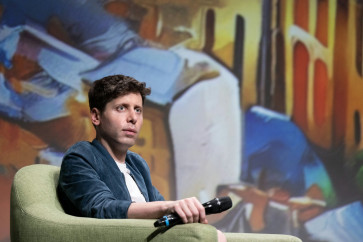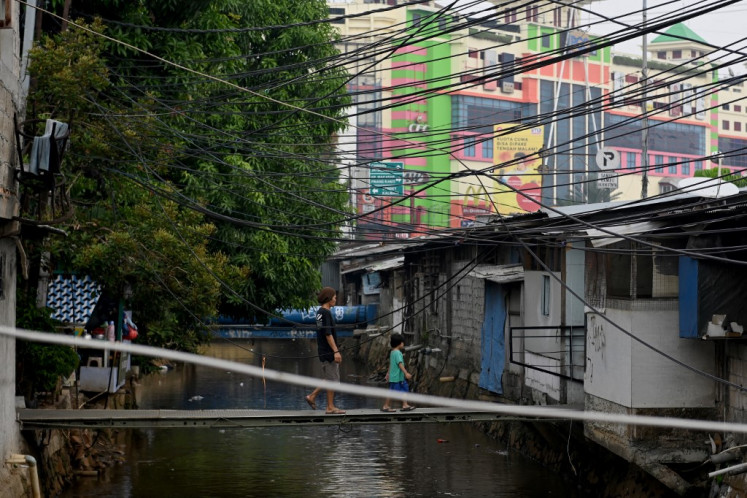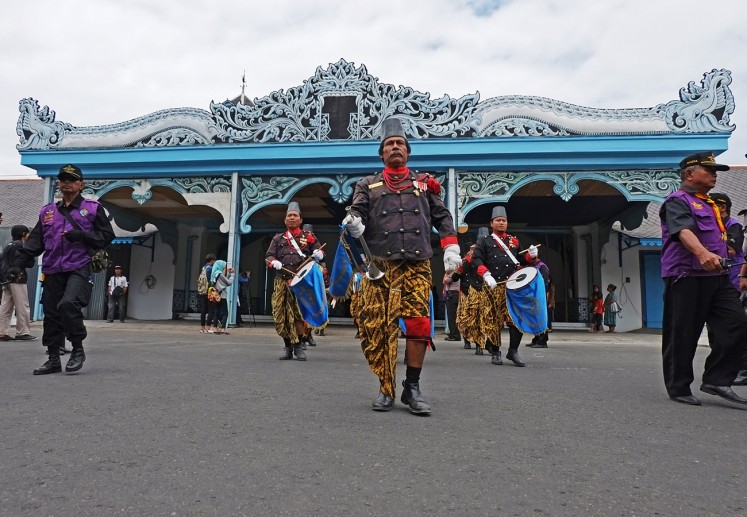Traffic jam: Jakarta roads remain among world's most congested
Ghiffari, 21, an engineer at an online accommodation company, has to take a 20-minute trip by motorbike from his home in Palmerah, West Jakarta, to his office in Gambir, Central Jakarta, every day
Change text size
Gift Premium Articles
to Anyone

G
hiffari, 21, an engineer at an online accommodation company, has to take a 20-minute trip by motorbike from his home in Palmerah, West Jakarta, to his office in Gambir, Central Jakarta, every day. Oftentimes, it takes him 15 to 20 minutes longer because of heavy traffic.
“The traffic is very irritating,” he told The Jakarta Post on Tuesday. “My work sometimes requires me to move from one place to another.”
Ghiffari's longer travel time is an example of Jakarta's decades-long traffic issue, with the city failing to show any improvements in its congestion rate since 2018, according to a report.
The TomTom Traffic Index, an annual report published by Dutch location technology company TomTom, shows in its 2019 report that Jakarta’s traffic congestion rate stagnated at 53 percent between 2018 and 2019. The city's congestion rate had improved by 8 percentage points to 53 percent in 2018 from 61 percent in 2017.
The rate, calculated based on the daily travel times of all vehicles within a year, means that a trip in the city will take 53 percent longer than when the roads are clear. Cities with a traffic jam rate below 15 percent are considered to be the least congested.
"Globally, there’s a long road to travel until congestion levels are brought under control," Ralf-Peter Schäfer, TomTom vice president of traffic information, said in a statement released on Jan. 29.
He suggested that the rise of autonomous vehicles and car-sharing services would help alleviate congestion.
“But planners and policymakers can’t afford to sit and wait. They need to use all the tools available to them to analyze traffic levels and impacts, so they can make critical infrastructure,” he said.
"And drivers have a role to play, too. Small changes in driving behaviors can make a huge difference.”
Jakarta's traffic congestion was one of the driving factors of the central government's plan to move the capital city to a 256,000-hectare area in the North Penajam Paser and Kutai Kartanegara regencies in East Kalimantan.
Traffic congestion in Greater Jakarta caused annual losses equivalent to some Rp 67.5 trillion (US$4.9 billion), 2017 data from the National Development Planning Agency (Bappenas) showed.
The equivalent material losses were in line with the time lost during rush hour. For a supposedly 30-minute trip, drivers spent 19 minutes longer in the busiest one-hour period in the morning and 26 minutes in the evening. The extra time spent during rush hour in 2019 amounted to 174 hours or around seven days. It was equivalent to playing John Lennon's three-minute song “Imagine” 3,351 times.
The period between 5 p.m. and 6 p.m. on Fridays last year was the most congested. Driving before 5 p.m. on Fridays, therefore, could save drivers up to 5 hours per year for a 30-minute commute.
Jakarta was the least congested last year on June 4, a day before Idul Fitri celebrations, when the traffic rate fell to 9 percent.
This was because millions of people living in Greater Jakarta had left the city to celebrate Idul Fitri in their hometowns.
The TomTom report, covering 416 cities across 57 countries, shows that Jakarta dropped to 10th position last year from the eighth position in 2018 in worldwide ranking for traffic congestion.
The world's five most-congested cities last year were Bangalore in India with a 71 percent congestion rate, followed by Manila in the Philippines with 71 percent rate, Bogota in Colombia with 68 percent rate, Mumbai and Pune, also in India, with a 65 percent and 59 percent rate, respectively.
Jakarta's stagnant 53 percent congestion rate was caused by the rapid increase in people's daily movements, according to Greater Jakarta Transportation Body (BPTJ) spokesperson Budi Rahardjo. People's movements across Greater Jakarta rose by 85 percent to 88 million trips on average per day in 2018 from 47.5 million in 2015.
"We have introduced several initiatives, but they were insufficient given the trend in people's daily movements," Budi told the Post by phone on Tuesday.
The BPTJ has expanded the routes served by Transjabodetabek buses, which have a fare of between Rp 15,000 and Rp 20,000, to encourage a shift from private cars to public transportation.
To improve traffic flow, the Jakarta administration imposes the odd-even license plate policy on 25 roads and 28 toll road gates across the capital between 6 a.m. to 9 a.m. and from 4 p.m. to 9 p.m. on weekdays.
Jakarta Transportation Agency head Syafrin Liputo told reporters on Jan. 30 that the odd-even policy had improved the average travel time to 33 kilometers per hour from 25 km per hour.
"Our strategy to reduce [congestion] was by imposing the odd-even policy at toll road exits," he said. "It has reduced congestion quite significantly." (dfr)









